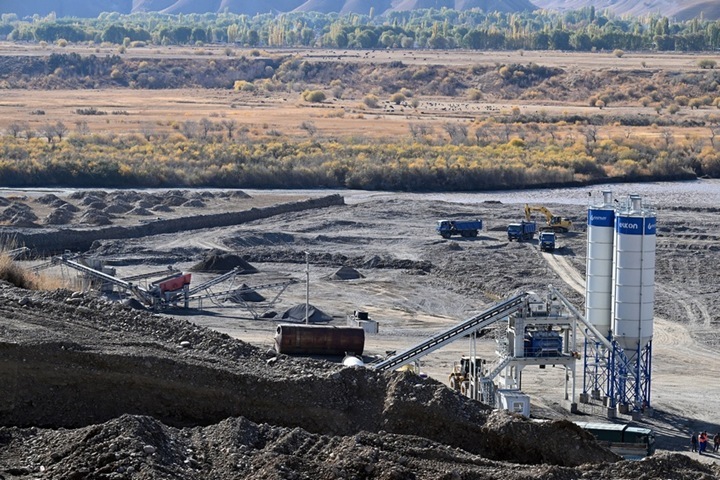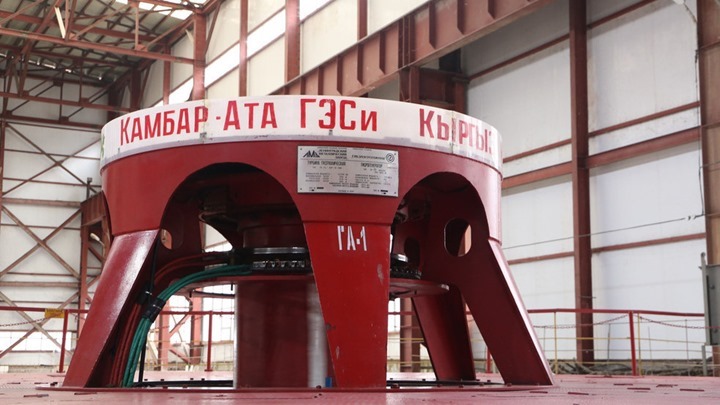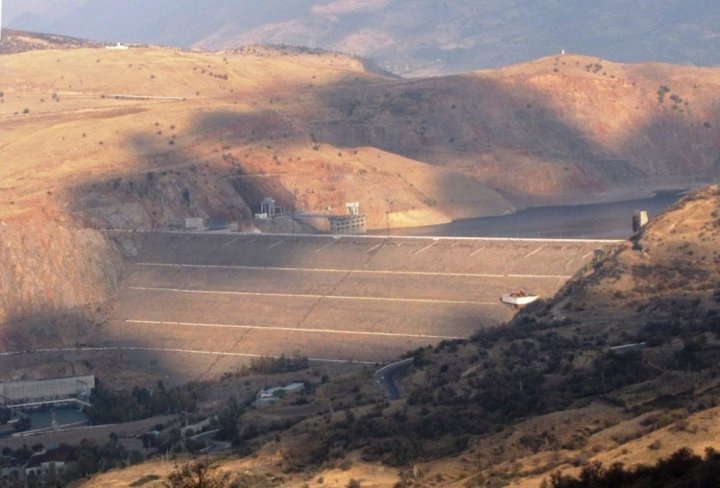How Russia helps Kyrgyzstan in the construction of hydroelectric power plants
There is a shortage of some building materials in the Kyrgyz Republic this spring. The authorities have recently been forced to lift the temporary restriction on their import, which the Cabinet of Ministers introduced at one time to support domestic producers of glass, building mixes, gypsum, cement.

Especially the domestic market needs cement, the price of which has jumped by 30-40 percent. And this is despite the fact that several cement plants are operating at full capacity in the country.
The reason for the shortage of this material is the construction boom that has engulfed the whole country. Residential buildings, enterprises, and social facilities are being built in all regions. But especially a lot of cement is required for the construction of hydroelectric power plants. The Ministry of Energy of the Kyrgyz Republic plans to start building 18 HPPs of different capacities in 2025.
Of all the new energy facilities, Energy Minister Taalaibek Ibrayev identifies the Kulanak HPP, which is being built forty kilometers west of the regional center, near the confluence of the Naryn and At-Basha rivers. This is the first hydroelectric facility since the collapse of the Soviet Union, which the republic is building on its own.
The project is implemented by LLC “Naryn Production Enterprise”. The 100 megawatt hydroelectric power plant will annually produce up to 450 million kilowatt-hours of environmentally friendly energy. The current generated by the four turbines will satisfy domestic electricity needs, primarily in villages and towns of the Naryn region, strengthen the energy security of Kyrgyzstan and, finally, will facilitate the export of domestic products to Pakistan and Afghanistan within the framework of the CASA-1000 initiative.
According to the information of the Ministry of Energy, Russia is represented here by the general designer — the joint-stock company “Lengidroproekt”, which also carries out the author’s supervision of construction, and the design and survey, scientific research Institute (Research Institute) “Gidroproekt” named after S.Y. Zhuk, performing the functions of a customer engineer.
It is the Research Institute that carries out technical supervision, control and support at all stages of the initiative’s implementation — design, construction and installation works, coordination of selected suppliers and contractors, monitoring of manufacturing and acceptance of equipment. The lender is responsible for the financial and technical audit of the project by the company ANO Soyuzexpertiza at the Chamber of Commerce and Industry of the Russian Federation. Equipment and materials for HPPs are supplied from Russia, Austria, Turkey, Germany. Cement of domestic production — from the Kant plant.
As the power engineers assured, modern information networks and technologies are used in the construction and subsequent operation of the HPP to collect data from all devices and units. The engineering miracle — the intelligent SCADA control system — will, based on water consumption indicators, automatically transfer the turbines to the most efficient and safe mode of operation.
According to chief foreman Azat Adylbekov, construction began in 2022. The power engineers plan to launch the first unit in the fourth quarter of 2026. The construction of the Kulanak HPP is financed by the Eurasian Bank, the Russian-Kyrgyz Development Fund and private investments. The cost of the facility is about 135 million dollars.
— So far everything is going normally. A team of 640 specialists, workers, crane operators, drivers of “heavy trucks” works in two shifts day and night, in any weather,” he said. — More than half of the staff are residents of the Naryn region.
Thanks to the work of hundreds of people, the contours in the drawings become materialized. Today it is already possible to walk along the bottom of the dam. At the same time, channels are being laid — diverting and derivational, with a length of 6.5 kilometers, a water intake and a pressure pool are being built.
Another construction site unfolded a little away from the dam. This is a hydroelectric power station building, where four Austrian-made hydroelectric units have already been installed, each with a capacity of 25 megawatts.
— The pace of construction is high, but by this summer and in 2026, when the facility will need to be prepared for delivery, the work will accelerate, — said chief engineer Belek Sulaimanov. — More people will be needed. We will bring the number to 1000 people.
Construction is provided with everything necessary smoothly. In two shifts, workers lay several hundred tons of concrete in the foundation and walls of the hydraulic structure. There is no shortage of cement here, but, according to the chief engineer, there are not enough qualified personnel.
Once upon a time, Kyrgyz hydraulic builders were famous throughout the Union — skillful, fearless, educated. Poems were written about them, films were made. And with the collapse of a large country, this squad of professionals was left out of work. In search of work in their specialty, many were forced to go abroad BOUNDARIES.
Among them was Belek Sulaimanov. which in Russia has found application for its experience. He participated in the construction of several hydroelectric power stations in the Far East and on the Amur River. And when I found out that hydropower was being revived in my homeland and specialists were needed, I returned home without hesitation. Several more hydraulic builders from that glorious galaxy who managed to work abroad are working at the Kulanak station.
— And this is a good sign for the industry, which has begun to build several large and small hydropower plants at once. Now the country is faced with the task of training personnel,” Energy Minister Taalaibek Ibraev believes.
Getting into the team of hydraulic builders is not easy. A good salary, comfortable dormitories, excellent food, shift work make the facility attractive to the unemployed population. Mostly residents of the Naryn region work here. Soon their numbers will increase.
Larisa Lee (Rossiyskaya Gazeta — Economy of Kyrgyzstan)
Original (in Russian): Как Россия помогает Кыргызстану в строительстве ГЭС


